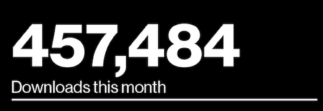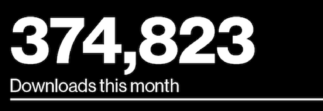A new MIT Press book, The Access Principle: The Case for Open Access to Research and Scholarship illuminates many of the complex issues and concerns reflected in MIT’s new initiative to support faculty in the retention of rights when assigning copyright to publishers. (See the MIT amendment to publisher copyright transfer agreements for more information about this initiative).
Opening Access: The Right to Know
In The Access Principle, John Willinsky, University of British Columbia Professor of Literacy and Technology and developer of Open Journals Systems software, offers a compelling summary of the important social, political, and economic issues raised by the “state of declining access to research and scholarship within an otherwise expanding global academic community,†and describes how changing models for scholarly publishing can increase access to (and the impact of) research and scholarship.

Willinsky defines the access principle as the belief that a “commitment to the value and quality of research carries with it responsibility to extend the circulation of such work as far as possible and ideally to all who are interested in it and all who might profit by it.†He places this access principle in a long line of human history, as a fundamental human and moral right—the “right to know.â€
Research and Scholarship as a Public Good
His fundamental premise is that research and scholarship are a public good, which is something “beneficial to everyone who seeks it, without their use of it diminishing its value.†This “lighthouse property of knowledge†is directly at odds with the traditional commercial publishing enterprise, which seeks to create barriers to access in order to generate profit. Willinsky marshals significant and telling facts to support his contention that it is time for change in this model. Among the many such facts: 50,000 journals are published worldwide; 20,000 or more of them available online, but just three for-profit companies control 60 percent of the research indexed in Web of Science.
Increasing Impact
The limitations of this current economic model are brought into high relief by the availability of new technology, which makes new uses of content and new modes of publication possible. The kind of access models available through the web stand to benefit universities, the public, and developing countries, and perhaps most of all, authors — by increasing the impact of their research. Willinksy refers to many studies that demonstrate that making a research article available without the barrier of a subscription will lead to more use and citation. In one such study “…open access computer science papers [were shown to] garner 4.5 times as many citations as their print equivalents.â€
Copyright Out of Balance
His arguments support the kind of effort MIT faculty are making with the MIT copyright amendment. He wryly observes that a typical author agreement will “reverse what would otherwise seem to be the case, namely, that the academic community hires the publishers, in effect, to provide a service necessary for the circulation of knowledge. Instead, the contract positions the editor, and by implication the author, as working for the publisher.”
The digital environment has “add[ed] to the significance†of this traditional copyright transfer, such that: “…copyright is too often used to protect the publisher’s right to charge what it will for its journals, placing what can be a prohibitive price on entry into what is otherwise thought of as the public realm or common property…. Copyright is being used by some publishers to ensure that the transfer from print to digital publishing does nothing to diminish the profitability of scholarly publishing, and, if possible, increases it.â€
In a full chapter on these significant problems with copyright, Willinksy notes that law intended to balance the interests of the creator and the public has instead led to “’the enclosure of the intangible commons of the mind’†borrowing James Boyle’s “analogy with the historic enclosure and loss of shared grazing lands or commons.†Willinsky reviews how Creative Commons and other efforts have arisen to redress the imbalance between public interests and those of the rights-holder, and what role individual authors can play in this struggle.
Long History of Opening Access to Scholarly Publishing
Willinsky’s positions today’s debates over open access as “another kind of upheaval in scholarly publishing†that is only the latest in an ongoing evolution; Willinsky describes a continual progress toward more openness, as technologies have made that openness possible. Thus, open access could be “the next step in a tradition that includes the printing press and penny post, public libraries and public schools. …[and] the ‘invisible colleges’ of the seventeenth century…â€.
Setting the context for his argument, Willinsky includes a valuable chapter covering a history of the academic journal – starting with its origin nearly 350 years ago in the Royal Society’s Philosophical Transactions of 1665. It seems worth recalling today, in the face of the many fears and concerns raised by open access, that this journal was a “risky, untested form of publication†that “challenged how the Royal Society, as well as the university community, went about doing science, leading them to see the value of greater openness and access to the work they were doing.â€
A Critical Juncture
Willinsky offers an overview of ten different models for open access to scholarship and research, along with an analysis of the impact of increased access on publishers, scholarly societies, libraries, and the developing world. His contention is that our society is at a critical juncture — that “…the research article is currently at the center of a struggle over the economics of access that may determine the global presence and impact of the research enterprise.â€
Willinsky offers a readable and compelling summary of how we arrived at this critical juncture and what we can — and should — do about it. The suggestions he offers for individual and collective action to increase access to research and scholarship are of vital concern for MIT and its faculty.
If you have any comments or questions about the issues raised here, or in relation to the MIT amendment, please contact copyright-lib@mit.edu.
WANT TO CHECK THIS BOOK OUT?
See information about the MIT Libraries’ copies of this book.


